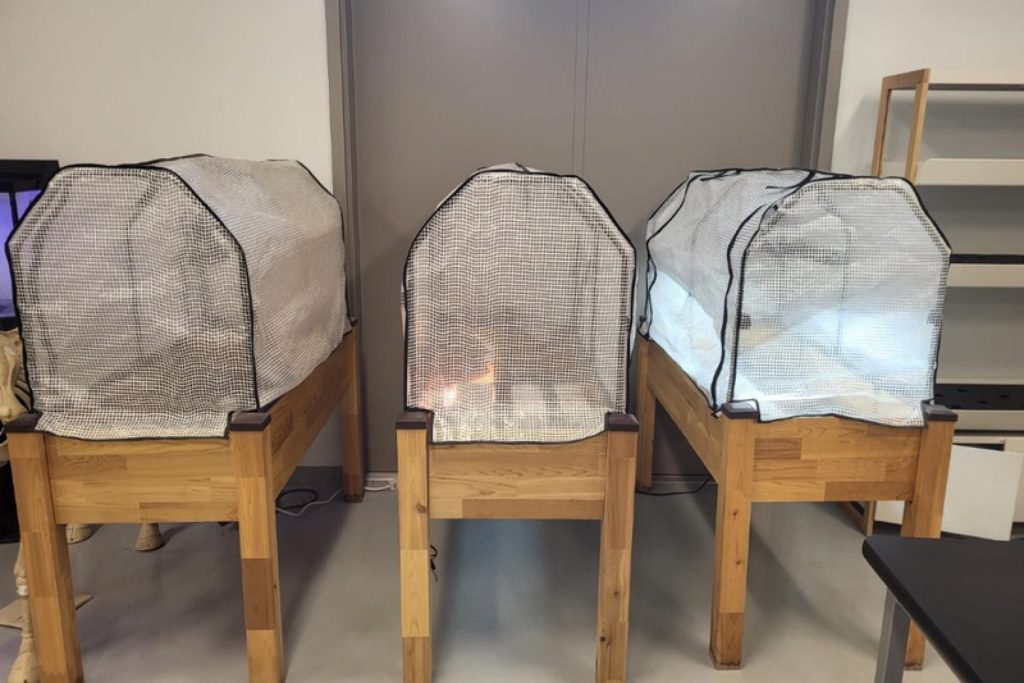Thank you to Julie Slama at The City Journals for this wonderful write-up of our “Plant the Moon Challenge!”

Working with NASA, American Academy of Innovation students discovered a crop that would grow best on the moon.
It was part of the Plant the Moon Challenge, where AAI plant & soil science students tested various crops before winning the best in show award for experiment design, said their teacher Kathy Nuttall.
“It’s part of a program where NASA partners with a variety of different scientists, and reaches out to elementary, middle school, high school and college students to figure out what kind of plants they could potentially plant on the moon — and on Mars,” she said. “Part of it is if there’s any chance of going to Mars, people traveling from Earth will have to make a stop at the moon to refuel and get food to make it to Mars. So, our plan was to see what crops we can grow on the moon that these people could pick up and get them to Mars and back.”
NASA sent the class a soil composite and the class divided into groups of six students each to test a different crop and meet the set criteria, such as having a research plan, a thesis, photos and other requirements.
“The students researched, designed, created their potting system and their watering system keeping in mind the amount of light and moisture that went with their plan,” Nuttall said about the project that lasted about three months.
The students narrowed their choices to carrots, radishes, beets and peas.
Each group created a hypothesis. For example, the beet team’s was: “If we add UV light to fill in the gaps of the lunar day/night cycle and use drip watering or bottom watering to keep the plants consistently hydrated, then we can overcome the challenge of the dusty lunar regolith and successfully harvest full sized beets in regular harvest time.”
The groups were allowed to experiment with light, water and adding additional potting soil, although at least 30 percent of it had to be the composite.
“The soil wasn’t as rich and dark. The students wore masks when they worked with it just because we’re not really sure what that would do if they inhaled it. They wore gloves and were careful when they were working with it,” Nuttall said. “While they were determining if we can grow something edible from the soil, they were told not to eat it.”
They recorded the plants’ growth by measuring the pH and the amount of water, Nuttall said.
“Everything other than the carrots appeared normal. The carrots are a little different, as far as their shape and form, which was kind of interesting to them. They were kind of fat and then they started to curl instead of being narrow and straight like we typically see. The peas did pretty well, though they didn’t get pods,” she said.
After submitting their findings, a Zoom ceremony was held where the students learned what others did with the project as well as the results.
AAI’s beet team of seniors Alex Paraskeva, Savanna Stout, Saoirse Thoman-Black, Forest Harper and Hayden Hartford and sophomore Basil Paraskeva were awarded certificates for their experiment design.
“I’m really proud of what my students did for being the first time and figuring it all out,” Nuttall said. “It was an interesting project for the students. NASA has been doing this for a year or two. When I learned about it, I thought this was a project for the students to discover what they can do. It made the students go through the whole process step by step. It was a good learning experiment.”